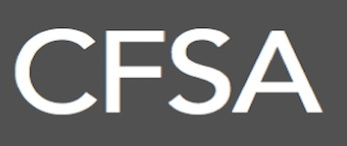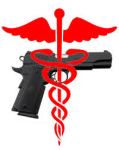Back in 2015, eight national medical organizations and the American Bar Association issued a ‘Call to Action,’ promoting the idea that physicians should take a more active and aggressive role in talking to patients about gun violence. Nobody argues with the fact that more than 115,000 Americans are annually injured or killed with guns, but leave it to Gun-nut Nation and their various sycophantic noisemakers who claim it isn’t a medical issue. According to these dummies, it’s the ‘person,’ not the ‘gun’ which causes gun injuries, so why worry about the gun?
It wouldn’t matter if the NRA and its toadies would just say what they have to say and leave it at that. But in Florida they got a law passed which criminalizes physicians who counsel patients about guns, and there’s even a physician in the U.S. Senate who (briefly) ran for President and chased the NRA vote by telling everyone that he didn’t think that guns were a public health issue at all.
The good news is that the medical community has refused to be cowed by this distemperate demonstration of stupidity and has begun asserting its authority to put the discussion about gun violence exactly where it belongs, namely, in face-to-face meetings between patients and their doctors which happen every day. And the news is that last week the 11th Circuit told the State of Florida to take its pernicious attempt to gag doctors and shove it you know where.
But while most people have no issue with a doctor talking to them about guns (after all, there’s no law that requires a patient to follow a doctor’s advice) many physicians don’t know what to say to their patients in discussions about guns. It’s not part of the medical school curriculum, there’s no medical academy that has yet to publish a treatment protocol on the subject, and many physicians don’t own guns. So how to proceed?
Now there’s an answer and it has been provided by a collaboration in Massachusetts by the Massachusetts Attorney General and the Massachusetts Medical Society which has now posted informational pamphlets on gun safety both for patients and physicians, as well as a Continuing Medical Education (CME) course on counseling patients about guns. Together, these resources constitute the most comprehensive effort yet developed to help physicians both identify patients who might be at risk for gun violence, as well as specific counseling strategies that might be employed in a clinical setting.
The CME course, available to the public either as a video or viewable slides, includes a section on how to initiate a conversation about gun safety which recognizes the fact that most gun owners are very conscious of the necessity to be careful with their firearms, so reminding them of the need for safety should not be done in a judgmental or accusatory way. Even more important is the presentation of five clinical scenarios, each describing a different situation involving potential gun violence risk (possible suicide, intimate partner violence, child playing with a real gun, etc.) and recommendations on how to effectively communicate risk-mitigating options to the patient and family members. Perhaps the most instructive scenario covers how to respond to the patient who is reluctant to talk about the existence of firearms in the home, and the guidance offered for this scenario might also ease the concerns of patients who would rather not discuss the gun issue at all.
This effort marks a significant step forward in the medical response to gun violence because we now have a substantive resource that can be used to make physicians feel more confident in talking to patients about guns and give patients reassurance that their physician is interested in their health and not trying to promote a particular point of view. An effective doctor-patient relationship assumes that any subject which arises during a medical consultation can be treated in a compassionate, honest and medically-proper way. It also assumes that the physician will give the patient evidence-based information about any risk to health. These new resources do both – it’s a big win-win.



Recent Comments